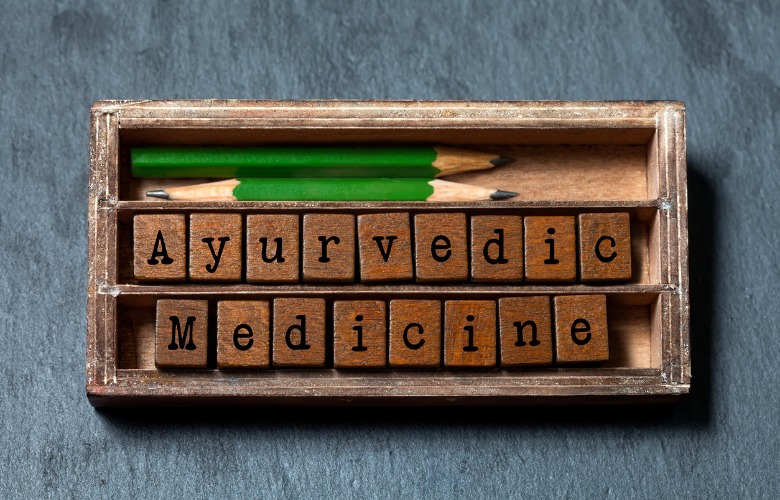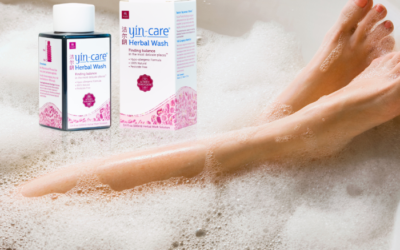Ayurveda for Daily Wellness
What is Ayurveda?
Ayurveda originated in India more thousands of years ago and is a natural medicine system. The translation of Ayurveda is “life knowledge” – having been derived from the Sanskrit words Ayur meaning life and Veda meaning science and knowledge.
Ayurveda medicine is based on universal interconnectedness, including the prakriti (the body’s constitution) and doshas (life forces).

What are doshas?
A large part of Ayurveda is the concept that you and the universe are one. The connection is made by the five elements: space, air, fire, water, and earth. Our body, mind, and universe are made of; there is no separation between nature and you.
These elements are combined in different ways called doshas or mind-body types. In Ayurveda, there are three doshas: Vata, Pitta, and Kapha.
These are biological energies found in the human mind and body. We are all made up of the three doshas in a unique combination. Some have more of one dosha than the other. This determines your prakriti or nature. The balance of your doshas relies on the seasons, your diet, the environment, your age, and other factors. These can all affect health, mood, and energy levels.
Vata dosha
Vata reflects the qualities of the elements of space and air. This dosha is connected to all movements in the body and can give you creativity, communication, and flexibility when balanced however, if imbalanced, vata can bring anxiety, pain, and dryness.
Pitta dosha
Pitta reflects the qualities of the elements fire and water. This dosha is about transformation and governs digestion and metabolism. When balanced, pitta gives you decision-making, leadership, and critical analysis ability. Pitta will bring heartburn, hot flashes, inflammation, infection, rashes, ulcers, and fever if imbalanced.
Kapha dosha
Kapha reflects the qualities of the elements of water and earth. This dosha is the energy of building, growth, and stability – cementing the body as one. Balanced Kapha gives you nurturing, love, forgiveness, stamina, and perseverance. If imbalanced, Kapha brings obesity, diabetes, lethargy, sinus congestion, and depression.
Knowing your mind-body type can help you discover the specific needs – a personalized healing plan, if you may.
The tradition of dinacharya or daily routine
Dinacharya, also known as a daily routine, is adopting essential wellness practices to your everyday life to balance your doshas. Daily habits or routines help create positive changes in health and embrace individual needs and lifestyles. This is about a life-long commitment to wellness as you live your life – creating new habits slowly and rooting them into your daily life.
Dinacharya is about setting the tone for each day to bring positivity, a sense of calm, and taking the time to allow your body, mind, and spirit to cleanse and ground itself throughout your day.
Morning routine with Ayurveda
Waking up at the same time each day will help your body and mind fall into a pleasant rhythm and allow you time to begin your morning routine. Elimination is another important part of daily rituals, a bowel movement, which is a sign of a digestive system working correctly.
Some other Ayurveda practices to add to a morning routine
- Tongue scraping before brushing teeth (see below)
- Brush teeth
- Drink warm water with lemon to cleanse and awaken a digestive system
- Oil pulling (see below)
- Splash your face with cool water
- Self-massage (see below)
- Bathing or showering
- Ear or nasal lubrication
- Meditation
- Yoga
- Journaling
- Prayer
- Mindful eating
Nighttime routine with Ayurveda
As the day winds down – so should we. Take the time to prepare your body and mind for sleep and recovery from the day by going to bed at the same time every night.
- Mindfully eat a light meal at a regular time (the most significant meal should be lunch at noon).
- Favor warm meals that are recommended for your dosha.
- Take Triphala with warm water one hour before sleep to cleanse and detoxify the digestive system.
- Take a warm bath.
- Drink a glass full of warm milk with cardamom and nutmeg.
- Take ayurvedic sleep herbs.
Ayurveda self-massage
Ayurveda self-massage, also known as the practice of abhyanga, is an oil massage you give yourself. Massage helps to reduce the tension in your muscles, supports circulation, helps with sleep, supports healthy vision, increases longevity, and nourishes the body.
In Sanskrit, Sneha is translated as both “love” and “oil” – self-massage is an excellent way to practice self-care and show yourself some love every day with warm Ayurvedic oil. Choosing the best oil for abhyanga depends on your dosha or current balance, your prakriti or ayurvedic constitution, and your environment.
Vata oils – ashwagandha bala oil, mahanarayan oil, and ghee
Pitta oils – bhringaraj oil, brahmi oil, and neem oil
Kapha oils – sesame oil, almond oil, corn oil
You can also use a daily massage oil that is suited for all doshas.
Oil-pulling
Oil pulling or swishing is a traditional Ayurvedic practice that uses edible oil (often sunflower or coconut oil) to swish around the mouth pull out toxins, including bacteria. Ayurvedic oil pulling has been used for more than 5,000 years. In addition, it is believed to moisturize gums, reduce inflammation, whiten teeth, and increase saliva production.
Some oil pulling or swishing tips
- Use about a tablespoon of oil in your mouth and swish it around for about five minutes, slowly working up to fifteen to twenty minutes per day. You can do this while taking your morning walk or shower.
- Do not swallow the oil! You should always spit it out after swishing and rinse with warm water
- Oil pulling should never replace oral hygiene such as brushing or flossing!
Need visual instructions? Watch this video:
Tongue scraping
When practicing good oral hygiene, don’t forget your tongue! You can do this by brushing your tongue and your teeth with your toothbrush. However, some people find tongue scraping to be beneficial as well. Tongue scraping dates back to ancient times in India and is an Ayurvedic practice today. Your tongue is connected directly to your body’s vital organs according to Ayurveda beliefs. These organs include your liver, kidneys, lungs, spleen, and stomach.
Our bodies are constantly exposed to various toxins via our food, drinks, environments, metabolic wastes, and unresolved emotions. When these toxins are not properly digested, they can build up and cause symptoms including bad breath, body odor, mental fog, constipation, bloating, and fatigue.
Benefits of tongue scraping
- Clears toxins and bacteria from your tongue
- Removes dead cells from your tongue
- It helps prevent bad breath
- Enhances sense of taste and smell
- Supports overall oral and digestive health
- Stimulates internal organs gently
Here is a video on how to clean your tongue with a tongue scraper

Jemile earned a degree in Food Studies and Writing and has worked for almost 23 years in the medical and health industries. She has been a digital marketing consultant for Acupuncture Atlanta since 2011 as the social media manager and content manager. Writing has been a childhood dream for Jemile and writing daily for clients in the health, wellness, food, and art industries have been phenomenal. Jemile is originally from Brooklyn, NY, and lives in the Hudson Valley, NY. She lives with her husband, two daughters, her dog, and two fish. You can contact Jemile via Linkedin, her mom blog, or her website, lunaroseconsulting.com




